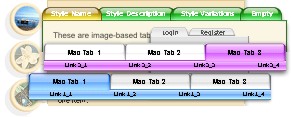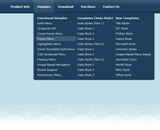Recent Questions
Q: When you open the dhtml submenu in Firefox, the flash object in the header (logo) disappear.
Can you help me?
A: You should use Deluxe Menu v3.0. You can download licensed packagefrom the same link in your license message.
See fix for flash in Firefox:
http://deluxe-menu.com/objects-overlapping-sample.html
Q: Mouseover "QUICK LINKS" at the top. The bottom java menu navigation item is falling behind the mainnav table.
It works fine in FireFox. Any suggestions?
A: Try to add a high z-index for the DIV with top menu, for example:
<DIV id=containerHeaderNav style="POSITION: absolute; z-index:50;">
Q: How does the SiteMap function work in java menu software? Does it automatically create tree-view from the domain registration (License Key Generator)? We want to generate SiteMap from our domain automatically and save it as HTML to be displayed on our homepage.
A: You can create Sitemap for your menu using java menu software.
Tools/Generate Google XML Sitemap
Tools/Generate Sitemap
> We want to generate SiteMap from our domain automatically and save it
> as HTML to be displayed on our homepage.
There is no such a feature in Deluxe Menus, you can create sitemap forthe menu only.
Q: I am struggling with my menu on my site the submenu is under the main text area. How do I make the submenu come to the front.
A: Check your z-index for <DIV id=navigation>.
Try to write it, for example, so:
<DIV id=navigationstyle="Z-INDEX: 10; LEFT: 0px; WIDTH: 170px; POSITION: absolute; TOP: 5px; HEIGHT: 600px">
Try that.










